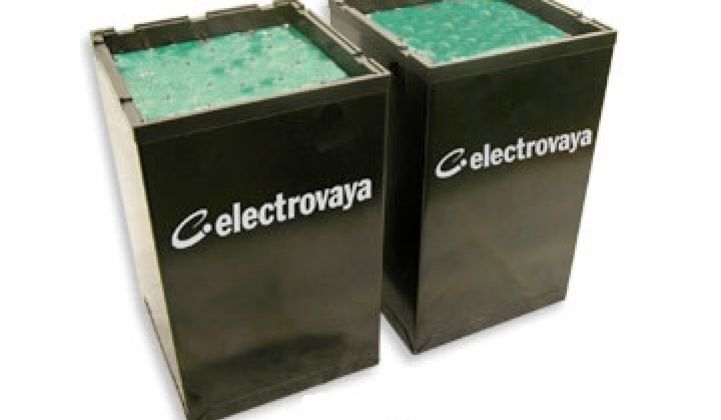Last month, Electrovaya announced that it had been selected by Chrysler as the battery supplier for the car maker's Ram plug-in hybrid electric vehicle demonstration program. The Ram PHEV will use Electrovaya’s 12kWh lithium ion battery.
One of Electrovaya’s major innovations is its SuperPolymer brand battery technology, which the company’s website calls “a novel nanostructured lithium ion polymer technology platform.” This technology provides faster, more efficient transport of lithium, and therefore greater energy density, according to Electrovaya.
According to Electrovaya’s website, the company has over 150 patents and pending applications worldwide. One key patent is U.S. Patent No. 7,588,862 (’862 Patent), which relates to the polymer technology.
The ‘862 Patent is entitled “Composite polymer electrolytes for a rechargeable lithium battery” and is directed to a composite electrolyte for use in thin plate rechargeable lithium batteries. The electrolyte may be a solid laminate or a separator sheet to act as a barrier between the positive and negative electrodes of the battery.
A separator embodiment comprises an inert porous or micro-porous polymer laminate (12) coated with a polymer coating (14) containing a dissociable lithium compound. The polymer coating is on the exposed surface of the laminate (12) and, during the coating process, partially flows into some of the pores (15) of the laminate (12).
The separator could have just one face of the laminate (12) coated with the second polymer (14), as shown here, or could have both faces coated.
The portion of unfilled pores (15) can be filled with a desired lithium salt containing organic solution (16). Electrodes (18, 18′) are in contact with the separator laminate (12). Current collectors (20, 20′) are located on the external surfaces of electrodes (18, 18′).
According to the ‘862 Patent, existing solid polymer electrolyte laminates had higher concentrations of dissociable lithium ions, but they frequently had low mechanical strength.
The patented electrolyte boosts a battery’s energy density by increasing the concentration of dissociable lithium ions per unit volume in the electrolyte while maintaining the mechanical strength of the laminate:
"It has now been found that the amount of dissociable lithium ions can be increased without increasing the thickness of the electrolyte, and simultaneously providing desirable mechanical strength and integrity."
***
Eric Lane is a patent attorney at Luce, Forward, Hamilton & Scripps in San Diego, where he works in the Intellectual Property and Climate Change & Clean Technologies practice groups. Mr. Lane can be reached at or at [email protected]. He authors the Green Patent Blog.



